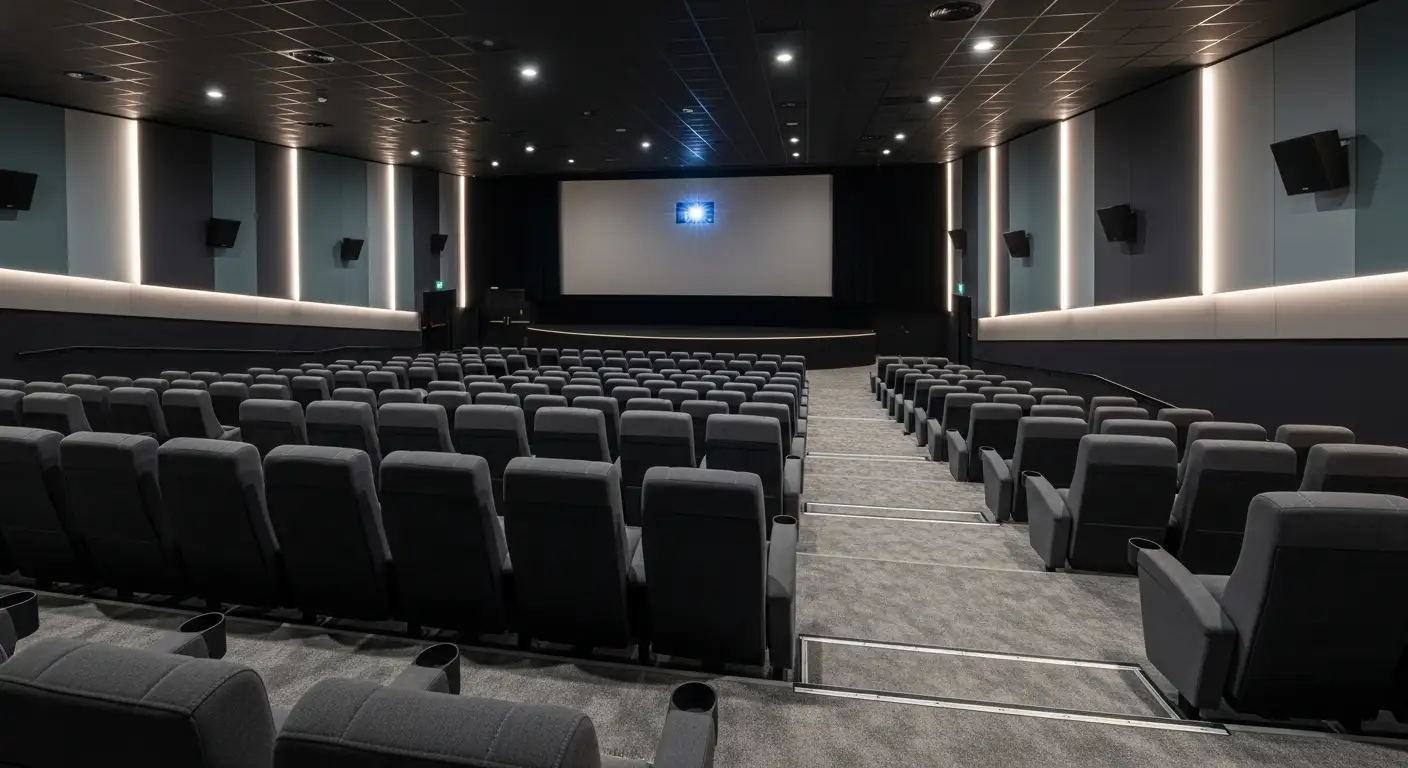Social Anxiety vs. Autism
A Closer Look at Social Difficulties in Autism and Anxiety Disorders
Social anxiety disorder and autism spectrum disorder are two conditions that can significantly impact social functioning, often leading to misconceptions and misdiagnoses. While they share some outward signs, their underlying causes, manifestations, and treatment approaches differ substantially. This article explores their symptoms, diagnostic criteria, differences, overlaps, and how to accurately distinguish between them to promote better understanding, support, and intervention strategies.
Understanding Autism Spectrum Disorder (ASD)
What are the typical symptoms of social anxiety disorder and autism spectrum disorder, and how are they diagnosed?
Social anxiety disorder (SAD), also known as social phobia, is characterized by an intense and persistent fear of social situations where individuals fear negative evaluation or embarrassment. Common physical symptoms include trembling, sweating, nausea, rapid heartbeat, and feeling overwhelmed during social encounters. Individuals with social anxiety often desire social interaction but find their fear so overwhelming that they tend to avoid social gatherings, meeting new people, or speaking in public.
Autism Spectrum Disorder (ASD), on the other hand, encompasses a range of neurodevelopmental conditions marked by ongoing challenges in social communication, restricted interests, and repetitive behaviors. Symptoms typically include difficulties in understanding social cues, maintaining eye contact, and engaging in reciprocal conversations. Autistic individuals may prefer solitude, exhibit intense focus on specific topics, and have sensory sensitivities that make noise, light, or textures uncomfortable.
While both conditions can involve social withdrawal and difficulties in interaction, their roots differ. Autism is a lifelong neurodevelopmental disorder evident from early childhood, with clear signs such as delayed speech, lack of eye contact, and repetitive movements. Social anxiety generally develops later, often during adolescence or adulthood, driven by a fear of negative judgment. It mainly affects how individuals respond to specific social settings rather than their overall communication abilities.
Diagnosis of these conditions relies on comprehensive clinical evaluation based on the DSM-5 criteria. In autism, assessments include developmental history, behavioral observations, and standardized tests to identify persistent patterns of social, communicative, and behavioral difficulties. For social anxiety, diagnosis involves evaluating the severity and impact of fear on daily functioning and may include questionnaires and interviews focusing on social fears, avoidance behaviors, and physical symptoms.
Because some symptoms overlap—for example, social withdrawal or avoiding eye contact—clinicians carefully differentiate between ASD and social anxiety. Autistic individuals may not seek social interactions due to intrinsic communication differences, while those with social anxiety actively want social engagement but are hindered by fear. In some cases, individuals can have both conditions, complicating diagnosis but emphasizing the need for thorough evaluation.
Treatment approaches are tailored accordingly. For ASD, interventions include social skills training, applied behavior analysis (ABA), and speech therapy, often started early for better outcomes. For social anxiety, cognitive-behavioral therapy (CBT) and exposure strategies are effective, sometimes complemented by medication like SSRIs. Recognizing and correctly diagnosing each condition ensures appropriate support, helping individuals improve their social functioning and quality of life.
Overall, although ASD and social anxiety can look similar in social settings, understanding their distinct underlying causes and developmental patterns is crucial for effective intervention and support.
Differentiating Autism and Social Anxiety: Key Features

What are the main differences and similarities between social anxiety disorder and autism spectrum disorder?
Both autism spectrum disorder (ASD) and social anxiety disorder (SAD) involve social difficulties, but their roots and manifestations differ significantly.
Autism is a neurodevelopmental condition characterized by challenges in communication, social interaction, and repetitive behaviors. Autistic individuals often struggle to understand social cues, interpret expressions, and maintain typical social reciprocity. They may have limited interests, hyperfocus on specific topics, and display sensory sensitivities, reacting strongly to stimulus like noise, textures, or lights.
In contrast, social anxiety disorder is primarily a mental health condition marked by an intense fear of negative evaluation in social situations. People with SAD might understand social cues and recognize norms but are overwhelmed by fear of embarrassment or judgment, resulting in avoidance behaviors.
A common point is that both groups can experience avoidance of social situations, but for different reasons. Autistic individuals might withdraw due to difficulty processing social information or sensory overload, often masking their discomfort. Those with SAD avoid social interactions due to fear and anxiety, despite having social skills.
Another difference is in recovery behaviors: autistic individuals often engage in masking to appear neurotypical, which can lead to burnout, while social anxiety triggers physical symptoms like trembling or sweating.
Despite shared challenges in social engagement, their causes, development, and treatment options are distinct, emphasizing the importance of accurate diagnosis and tailored support.
Is high levels of anxiety common in autistic individuals, and how does it impact diagnosis?
Anxiety is prevalent among autistic individuals, with research suggesting that nearly 50% experience significant anxiety symptoms.
Conditions such as social anxiety, specific phobias, obsessive-compulsive disorder, and general anxiety disorder are common comorbidities. Anxiety can exacerbate existing autism symptoms, making social interactions even more challenging and increasing sensory sensitivities.
This overlap complicates diagnosis because anxiety symptoms may be mistaken as primary issues or may mask core autism traits. For instance, an autistic person who is minimally verbal or exhibits withdrawal might be labeled solely as anxious, overlooking underlying social communication difficulties.
Managing anxiety is crucial. It impacts overall mental health, possibly leading to social withdrawal, depression, or refusal to engage in daily activities. Accurate assessment includes understanding both autism features and anxiety symptoms to develop effective, individualized intervention plans.
Therapies such as cognitive-behavioral therapy (CBT), supported by medication when necessary, can significantly improve the quality of life for autistic individuals by reducing anxiety levels and enhancing social functioning.
Summary Table of Differences and Overlaps
| Feature | Autism Spectrum Disorder | Social Anxiety Disorder | Similarities |
|---|---|---|---|
| Core challenge | Social communication deficits, repetitive behaviors | Fear of negative evaluation | Both involve social difficulties |
| Onset | Early childhood | Usually adolescence or adulthood | Both can impact social interactions |
| Symptoms | Sensory sensitivities, need for routines, masking | Physical symptoms under stress, avoidance | Anxiety symptoms like sweating, trembling |
| Underlying cause | Neurodevelopmental differences | Emotional and cognitive fear response | Both can lead to social avoidance |
| Treatment approach | Behavioral therapy, social skills training | CBT, medication, exposure | Require tailored support |
Understanding the nuanced differences helps in accurate diagnosis and effective intervention, ensuring support targets the specific needs of each individual.
Recognizing Symptoms and Diagnostic Processes

How can social anxiety disorder and autism spectrum disorder be distinguished based on symptoms and diagnostic criteria?
Distinguishing between social anxiety disorder (SAD) and autism spectrum disorder (ASD) involves careful assessment of their symptoms, timing, and underlying causes. Autism is a neurodevelopmental condition that appears early in childhood. Its symptoms include persistent challenges in social communication, such as difficulty understanding social cues, recognizing facial expressions, and maintaining typical eye contact. Repetitive behaviors, strong preferences for routines, sensory sensitivities, and deep, focused interests are also hallmark features of autism.
In contrast, social anxiety tends to develop later, often manifesting during adolescence or adulthood. It is characterized primarily by an intense fear of negative evaluation, embarrassment, or rejection. Individuals with social anxiety may understand social norms but feel overwhelmed by worry, leading to avoidance behaviors. Physical symptoms like trembling, sweating, and rapid heartbeat frequently accompany their anxiety.
Diagnostic criteria reflect these differences. Autism diagnosis heavily relies on early developmental history and observable behaviors, such as difficulty with reciprocal social interactions, restricted interests, and sensory issues. Clinicians look for consistent patterns over time, often confirmed through developmental screenings, behavioral assessments, and input from caregivers.
Social anxiety diagnosis, on the other hand, focuses on the presence of persistent fear or anxiety specifically related to social situations, with avoidance behaviors and physical symptoms lasting at least six months. Evaluations include clinical interviews, self-report questionnaires, and ruling out other conditions.
While both conditions can lead to social withdrawal and similar behaviors like avoiding eye contact or social gatherings, their roots differ. Autism involves intrinsic differences in social cognition and sensory processing, often identified by a lifelong pattern of behaviors. Social anxiety is rooted in emotional and fear-based responses, despite the individual's general capacity to understand social cues.
Furthermore, many autistic individuals also experience social anxiety—up to 50% in some studies—making differentiation challenging. Masking behaviors, where autistic individuals imitate social behaviors to fit in, can obscure underlying autism and sometimes lead to misdiagnosis as social anxiety.
Understanding these distinctions aids clinicians not only in making accurate diagnoses but also in designing effective, tailored interventions. For example, treatments targeting sensory sensitivities and establishing routines are central in autism support, whereas cognitive-behavioral therapy and exposure strategies are often effective against social anxiety.
Behavioral manifestations of both conditions
Both autism and social anxiety can present with behaviors like avoidance of social interactions, preference for solitude, and difficulty in interpreting nonverbal cues. However, in autism, these behaviors are often linked to core sensory and communication differences, whereas in social anxiety, they are driven by fear of judgment and embarrassment.
For instance, autistic individuals might avoid eye contact due to sensory overload or differences in neurological processing. Those with social anxiety might similarly avoid eye contact but primarily because of the fear of scrutiny.
Repetitive and restrictive behaviors, such as stimming or intense focus on specific interests, are typical in autism but generally not present in social anxiety.
Use of clinical assessments and tools
Diagnosis involves a combination of developmental history, behavioral observations, and standardized assessment tools. For autism, tools like the Autism Diagnostic Observation Schedule (ADOS) and Autism Diagnostic Interview-Revised (ADI-R) are common. These tools examine social communication, repetitive behaviors, and sensory sensitivities.
For social anxiety, clinicians often use the Social Phobia Inventory (SPIN), Liebowitz Social Anxiety Scale (LSAS), and detailed interviews. These evaluate the severity of fear, avoidance patterns, and physical symptoms.
Role of developmental history
Developmental history plays a crucial role in differentiating the two conditions. Autism symptoms are typically evident early, often by age three, with persistent patterns across multiple settings. Individuals may have struggled with social interactions, language development, and sensory sensitivities from an early age.
Conversely, social anxiety often develops in response to social situations or experiences and is not rooted in early childhood developmental delays. It may emerge after specific negative social experiences or in contexts where social judgment is prominent.
In summary, clinicians rely on a combination of symptom profile, timing, behavioral observations, and developmental history to differentiate autism spectrum disorder from social anxiety disorder. Correct diagnosis ensures appropriate support and interventions—whether that involves social skills training, behavioral therapies, or anxiety management strategies—supporting individuals' social functioning and mental health.
Manifestations in Social Behaviors

How can social anxiety and autism manifest differently in social behaviors?
Social anxiety disorder and autism spectrum disorder can both lead to social difficulties, but the reasons behind these challenges are quite distinct, influencing their behavioral manifestations.
For individuals with social anxiety, behaviors often stem from a profound fear of judgment, embarrassment, or negative evaluation. This leads to avoidance of social interactions, reluctance to speak in public, or staying quiet in social settings to minimize perceived risks. Physical symptoms such as sweating, trembling, rapid heartbeat, and nausea are common, making interactions even more uncomfortable.
In contrast, autistic individuals typically experience social challenges due to intrinsic differences in understanding and processing social cues. They may find it difficult to interpret facial expressions, gestures, or tone of voice. As a result, they might seem aloof, unresponsive, or uninterested, though they may genuinely desire social connection. They often struggle with spontaneous social behaviors and may limit their social interactions because of sensory sensitivities or difficulties with social norms.
A typical autistic behavior is limited eye contact—not out of fear but because of sensory overload or neurological differences. Similarly, repetitive behaviors or intense interests may interfere with social engagement. However, these actions are rooted in neurological differences rather than emotional fears.
Masking and camouflaging are common strategies autistic individuals use to appear more typical in social settings. They mimic facial expressions, rehearse conversations, or suppress stimming behaviors to blend in. While this can help them navigate social environments, it often increases stress and anxiety, sometimes leading to burnout or emotional exhaustion.
The impact on social motivation varies: autistic people may not seek out social interactions as readily due to difficulties or discomfort, whereas those with social anxiety may crave social contact but feel paralyzed by fear.
While both conditions involve social avoidance, the underlying motivations differ significantly. Social anxiety is driven by emotional responses to the fear of negative judgment, making behaviors reactive and anxiety-focused. Autism involves core differences in social cognition, perception, and sensory processing, leading to more fundamental challenges with social understanding.
Most importantly, these behaviors can coexist. Many autistic teens and adults experience high levels of social anxiety, especially when they recognize their differences and face social rejection. This overlap complicates diagnosis and requires a nuanced understanding to tailor appropriate support.
Summary of differences:
| Aspect | Autism Spectrum Disorder | Social Anxiety Disorder |
|---|---|---|
| Main cause | Neurological differences in social cognition and sensory processing | Emotional fear of negative evaluation |
| Behavior in social settings | Avoidance due to sensory overload, difficulty interpreting cues | Avoidance due to fear of judgment, embarrassment |
| Nonverbal communication | Limited eye contact, flat expressions, difficulties with gestures | Usually capable of recognizing cues but fears negative feedback |
| Reactions to social cues | Misinterpretation or non-response | Hyperfocus on social evaluation and potential misinterpretation |
| Strategist behaviors | Masking and camouflaging | Avoidance and safety behaviors |
| Desire for social contact | Often less driven by desire, more by routine or interest | Generally desires social connection but fears it |
Effectively differentiating these manifestations requires careful clinical assessment. Recognizing whether behaviors are rooted in neurological differences or emotional fear guides appropriate interventions.
Masking and Camouflaging Behaviors
Many autistic individuals adopt masking strategies to appear more typical in social situations. These include mimicking facial expressions, rehearsing conversations, suppressing stimming behaviors, and copying others’ social gestures. While masking can facilitate smoother interactions, it often results in increased emotional strain, leading to burnout, stress, and worsened anxiety.
Impact on Social Motivation
Autistic individuals often have a varied desire for social interaction. Some prefer solitude or selective engagement due to sensory and social challenges, while others may crave connection but feel hindered by their difficulties. Conversely, those with social anxiety might be highly motivated to engage socially but are held back by their fear of negative evaluation. This dynamic can cause frustration and social isolation in both groups.
Understanding these behavioral differences is crucial for developing supportive strategies. Tailored interventions, such as social skills training, sensory accommodations, and emotional regulation techniques, can help reduce avoidance behaviors and promote healthy social engagement.
In summary, although social anxiety and autism may look similar externally—such as social withdrawal or apparent aloofness—the underlying reasons differ markedly. Recognizing these distinctions is essential for accurate diagnosis and effective support, fostering an environment of empathy and understanding for individuals affected by either or both conditions.
Assessment and Diagnostic Tools

Are there any reliable tests or assessments that can help differentiate between social anxiety disorder and autism?
Differentiating autism spectrum disorder (ASD) from social anxiety disorder (SAD) can be challenging because they share some outward social behaviors, such as avoidance of eye contact and social interactions. To accurately distinguish between these conditions, mental health professionals rely on a combination of thorough evaluations, developmental histories, and specific standardized assessments.
Standardized tests, clinical interviews, and behavioral observations form the foundation of diagnosis. Tools like the Autism Diagnostic Observation Schedule (ADOS) are widely used to evaluate behaviors characteristic of autism, such as repetitive movements, sensory sensitivities, and difficulties with nonverbal communication. These examinations include direct interaction with the individual to observe social and communication skills in various contexts.
In addition to ADOS, questionnaires and rating scales such as the Autism Spectrum Rating Scales (ASRS) and the Social Anxiety Scale are employed to gather information from caregivers, teachers, or the individual themselves. These tools help flag typical features of ASD—like a preference for routines, hyperfocus on specific interests, and sensory issues—versus the fear-driven avoidance seen in social anxiety.
Though these assessments are invaluable, they do not provide a simple yes or no answer. No single test can definitively distinguish between ASD and SAD. Instead, a comprehensive evaluation that includes developmental history, a detailed clinical interview, behavioral assessments, and sometimes neuropsychological testing is necessary. This holistic approach allows clinicians to identify the unique patterns of each condition.
It is also essential to recognize that autism and social anxiety can coexist. When both conditions are present, symptoms can overlap or intensify, making diagnosis more complex. Clinicians need to carefully interpret behavioral patterns, considering factors such as the individual's awareness of social cues, the presence of repetitive behaviors, sensory sensitivities, and the motivation for social engagement.
The diagnostic process ultimately depends on the expertise of trained mental health professionals, such as psychologists, neurologists, or psychiatrists, who can accurately interpret the results. They use these assessments to inform tailored intervention plans suited to the individual's needs.
In summary, while there are reliable and standardized tools for helping differentiate between autism and social anxiety disorder, they must be used as part of a broader clinical evaluation. Proper diagnosis is crucial to ensure individuals receive appropriate support and treatment tailored to their specific condition.
For further guidance, professionals often refer to trusted sources and diagnostic guidelines, such as the DSM-5 criteria, to support their assessments. The process underscores the importance of personalized evaluation in understanding complex social behaviors and neurodevelopmental profiles.
You can explore more about diagnostic tools for social anxiety and autism by searching for terms like "clinical assessments for autism" and "diagnostic tools for social anxiety."
| Diagnostic Tool or Method | Main Purpose | Additional Details |
|---|---|---|
| Autism Diagnostic Observation Schedule (ADOS) | Assess behaviors specific to autism | Includes structured activities and direct observation |
| Autism Spectrum Rating Scales (ASRS) | Quantify ASD symptoms | Completed by caregivers or teachers |
| Clinical Interviews | Gather developmental history | Includes developmental milestones, social behaviors |
| Behavioral Observations | Observe social and adaptive skills | Conducted in clinical or natural settings |
| Questionnaires & Rating Scales | Screen symptoms of autism and social anxiety | Helps inform diagnostic impressions |
Remember, no single assessment replaces a comprehensive clinical judgment made by qualified professionals. Accurate diagnosis often involves integrating multiple sources of information tailored to each individual's presentation.
Children's Anxiety and Autism Misdiagnosis Risks

How do symptoms overlap in children?
Children with autism spectrum disorder (ASD) and those with anxiety disorders often share similar outward behaviors, which can complicate diagnosis. Both groups may display social withdrawal, intense fears, and repetitive behaviors. For instance, an autistic child might avoid social interactions or insist on routines, which can resemble anxiety-driven avoidance.
Repetitive movements like hand-flapping or rocking might be present in autistic children, but similar actions can also be manifestations of anxious behaviors or coping mechanisms. Additionally, emotional distress such as tantrums or withdrawal can be caused by sensory overload in autism or anxiety about social judgment.
Masking or camouflaging behaviors are common, especially in autistic children trying to fit in socially. They might imitate peers or hide their discomfort, which often masks the true nature of their condition and can lead to misinterpretation as social anxiety.
Challenges in diagnosing autism and anxiety
Differentiating between autism and social anxiety disorder (SAD) in children presents unique hurdles. Autism is a neurodevelopmental condition identified by persistent challenges in communication, social understanding, and behaviors from early childhood. On the other hand, social anxiety is a mental health condition that often develops later, characterized by a persistent fear of negative evaluation.
One major challenge is that both conditions can involve difficulties with eye contact, understanding social cues, and maintaining social interactions. An autistic child may avoid eye contact because of sensory sensitivities or differences in social cognition, whereas a child with social anxiety may avoid eye contact due to fear of judgment.
Children with autism might also have a limited interest in social activities or prefer solitude, which can be mistaken simply as aloofness or shyness. Their inability to pick up on social norms and cues can also be perceived as rudeness, further complicating diagnosis.
Since anxiety symptoms like nervousness, stomachaches, or difficulty sleeping can occur in both groups, clinicians face the challenge of parsing out what is a core part of autism versus symptoms of anxiety.
Why are thorough assessments crucial?
Accurate diagnosis depends on comprehensive evaluations that consider the child's developmental history, behavior in various settings, and responses to different situations. Standardized tools, behavioral observations, and input from parents, teachers, and clinicians are essential.
The importance of diagnosis extends beyond labeling; it guides appropriate intervention strategies. Misdiagnosing an autistic child with just an anxiety disorder might lead to treatments that do not address core autism-related challenges, such as communication and sensory sensitivities.
Conversely, missing a diagnosis of anxiety in an autistic child can lead to untreated distress, increased behavioral issues, and lower quality of life.
Screening and assessment should include measures specific to both conditions, and, when needed, multidisciplinary evaluations by psychologists, neurologists, and speech-language pathologists can provide clarity.
Understanding the nuanced differences and overlaps helps family and professionals craft support tailored to the child's needs, respecting their neurodiversity and promoting healthier social and emotional development.
| Aspect | Autism Spectrum Disorder | Social Anxiety Disorder | Additional Notes |
|---|---|---|---|
| Onset | Usually early childhood | Adolescence or early adulthood | Autism is lifelong; social anxiety can develop later |
| Core features | Communication difficulties, repetitive behaviors, sensory sensitivities | Fear of negative evaluation, avoidance, physical symptoms | Both can involve social avoidance |
| Social behavior | Social communication challenges, difficulty understanding cues | Capable of social cognition but fears judgment | Avoidance may look similar but has different reasons |
| Diagnostic tools | Developmental history, behavioral assessments, DSM-5 criteria | Clinical interviews, questionnaires, DSM-5 criteria | Both require comprehensive evaluation |
| Impact of masking | Masking can hide autism traits, leading to misdiagnosis | Masking less common; fear-driven avoidance is overt | Masking in autism increases diagnostic complexity |
| Treatment approaches | Behavioral therapy, social skills training, structured routines | CBT, exposure therapy, medication | Different intervention goals, sometimes overlapping |
In conclusion, understanding the distinctions and similarities of autism and social anxiety in children underscores the importance of thorough, expert assessment. Accurate diagnosis is crucial to providing effective, individualized support that respects each child's unique neuropsychological profile.
Treatment Strategies for Both Conditions
What are the available treatment options for social anxiety disorder and autism spectrum disorder?
Managing social anxiety disorder (SAD) and autism spectrum disorder (ASD) requires a nuanced approach tailored to the unique needs of each individual. While these conditions differ fundamentally—SAD being an anxiety-based mental health issue and ASD a persistent neurodevelopmental condition—they share some overlapping treatment strategies.
Behavioral therapies and social skills training form the cornerstone of intervention for both conditions. For social anxiety, cognitive-behavioral therapy (CBT) is widely regarded as highly effective. It helps individuals challenge negative thoughts and develop healthier social behaviors. CBT often incorporates exposure tasks, allowing individuals to gradually face social situations they fear, reducing anxiety over time. Social skills training is used to enhance communication, nonverbal cues understanding, and social problem-solving, especially in autistic individuals, helping them navigate social environments more comfortably.
In the case of autism, evidence-based therapies like Applied Behavior Analysis (ABA) are fundamental. These interventions focus on reinforcing positive behaviors, reducing problematic behaviors, and teaching new skills. Social skills training, tailored to the needs of autistic individuals, might include practicing eye contact, turn-taking, and understanding social norms through structured sessions. Educational supports and routines are also crucial, helping autistic individuals gain predictability and comfort in their daily lives.
Medication options and management play a supportive role in treating both conditions but are not standalone solutions. For social anxiety, SSRIs such as fluoxetine (Prozac) and citalopram are commonly prescribed to help manage anxiety symptoms, panic attacks, and associated phobias. Anti-anxiety medications like buspirone may also be used to reduce social fears. For autism, medications are typically targeted at specific symptoms—such as melatonin for sleep issues, or antipsychotics in cases of severe behavioral challenges. Selective Serotonin Reuptake Inhibitors (SSRIs) may sometimes be used to reduce repetitive behaviors or co-occurring anxiety.
The role of family and educational support cannot be overstated. Support from families, schools, and community programs enhances treatment effectiveness significantly. Structured routines, consistent behavioral reinforcement, and social stories can support behavioral and social development, especially for autistic children. Family therapy can help caregivers understand and manage their own stress, improve communication, and better support their loved ones.
In summary, the most effective treatment for both social anxiety and autism integrates behavioral therapies, tailored social skills training, appropriate medication management, and robust support systems involving families and educational settings. These combined efforts aim to improve social functioning, reduce anxiety, and enhance overall quality of life for affected individuals.
| Treatment Type | Common Interventions | Targeted Conditions | Additional Notes |
|---|---|---|---|
| Behavioral therapies | CBT, ABA, social skills training | Both, especially in social anxiety and ASD | Customized to individual needs |
| Medications | SSRIs, buspirone, melatonin | Social anxiety, certain ASD symptoms | Requires screening and monitoring |
| Family & educational support | Structured routines, social stories | Both | Critical for ongoing development and coping |
| Emerging strategies | Virtual reality exposure, peer support | Social anxiety, ASD | Enhancing engagement and generalization |
This comprehensive, multidisciplinary approach ensures that each individual receives personalized care, fostering better social adaptation and emotional well-being.
Wrapping Up: Supporting Individuals with Social Challenges
Understanding the nuanced differences and overlaps between social anxiety disorder and autism spectrum disorder is crucial for effective diagnosis and intervention. Recognizing the distinct underlying causes—neurological differences in autism and emotional-fear pathways in social anxiety—allows clinicians and caregivers to tailor support strategies that address specific needs. Early identification, comprehensive assessments, and personalized treatment plans involving behavioral therapies, social skills training, and medical management can significantly enhance social functioning and overall quality of life. Emphasizing neurodiversity, promoting acceptance, and fostering supportive environments are key to helping individuals navigate social worlds with resilience and confidence.
References
- How to Tell the Difference Between Social Anxiety and Autism
- 'Why Am I So Awkward?' Social Anxiety Disorder vs Autism
- Autism vs. Social Anxiety: What to Know
- Social Anxiety vs. Autism: Key Differences - Talkspace
- Differences Between Social Anxiety and Autism - Simply Psychology
- Social Anxiety vs Autism - Golden Care Therapy
- Correlations Between the Development of Social Anxiety and ...
- Autism and Social Anxiety: Overlap, Similarities, and Differences
Other articles
Recent articles

Cultural Perspectives On Autism Around The World

Autism And Creative Arts As Emotional Expression Tools

Developing Emotional Regulation Skills In Autistic Teens

Best Sensory-Friendly Lighting Solutions For Autism

Cognitive Behavioral Therapy Adaptations For Autism

Best Practices For Autism-Friendly Movie Screenings

Autism And Eating Challenges Beyond Picky Eating

Best Practices For Autism-Friendly Public Transport Design

Best Ways To Foster Collaboration Between Parents And Schools For Autism Support

Supporting Autistic Children During Transitions Between Activities

The Role Of Teachers In Fostering Autism Peer Acceptance

Using Art Therapy To Support Children With Autism

Autism And Strategies For Addressing Sensory Defensiveness

Autism And The Benefits Of Structured Leisure Activities

How To Support Autistic Students During Exam Season

Autism And Goal Setting For Personal Growth

How To Use Gamification In Autism Learning Programs

How Schools Can Reduce Bullying Of Autistic Students

Early Intervention Strategies For Autism Spectrum Disorder

The Role Of Therapists In Autism Life Skills Coaching

How To Support Autistic Individuals In Crisis Situations

Autism And Self-Care Routines For Stress Management

Understanding Echolalia And Its Role In Autism Communication

Autism And Fine Arts Education Benefits

The Impact Of Multisensory Learning On Autism Education

How Family Counseling Supports Autism Household Dynamics

Best Practices For Inclusive Playgrounds For Autism

Best Practices For Autism-Friendly Shopping Centers

How Autism Affects Fine Motor Skill Development

Best Ways To Introduce Sensory Activities Into Daily Routines

How Sports Teams Can Be Inclusive Of Autistic Players

Autism And Strategies For Building Workplace Resilience

Autism And The Impact Of Hormonal Changes During Puberty

How To Support Autistic Students In Foreign Language Classes

Best Ways To Teach Money Skills To Teens With Autism

Supporting Siblings Of Children With Autism

Autism And Co-Occurring Gastrointestinal Disorders

The Role Of Art Projects In Autism Sensory Integration

How Schools Can Incorporate Sensory Break Spaces

Best Practices For Autism Sensory Regulation At School

Autism And Strategies For Teaching Organizational Skills

Understanding The Relationship Between Autism And Anxiety Disorders

Autism And Life Planning For Long-Term Care

Exploring Visual Supports In Autism Education

Ways To Encourage Social Interaction In Children With Autism

The Connection Between Autism And Dyscalculia

The Role Of Occupational Therapy In Transition Planning For Autism

The Role Of Physical Therapists In Autism Motor Skills Support

How To Teach Decision-Making Skills To Autistic Young Adults

The Connection Between Autism And Epilepsy

Best Practices For Transitioning Autistic Children Into New Schools

Autism And Time Management Challenges In Adulthood

The Role Of Visual Arts In Autism Communication Development

How To Address Tactile Defensiveness In Autism

Best Practices For Telehealth Autism Therapy

How To Help Autistic Children Develop Friendship Skills

How Schools Can Support Autistic Students In Career Prep

Best Strategies For Autism-Friendly Event Planning

Understanding Noncontingent Reinforcement In Autism Behavior Plans

How Drama Therapy Benefits Autistic Individuals

Best Practices For Autism-Friendly Fitness And Recreation Centers

Best Ways To Promote Healthy Social Media Use For Autistic Teens

How To Help Autistic Children Cope With Public Speaking

Autism And Strategies For Managing Unexpected Changes

Best Podcasts About Autism For Parents And Educators

Autism And The Impact Of Seasonal Changes On Behavior

The Role Of Diet In Managing Co-Occurring Conditions With Autism

Sleep Challenges In Autism And Practical Solutions

Best Ways To Build Daily Routines For Autistic Children

Best Practices For Supporting Autistic Entrepreneurs

Autism And Strategies For Navigating Large Social Gatherings

Adaptive Sports And Recreational Activities For People With Autism

Autism And The Benefits Of Story-Based Learning Activities

Understanding The Role Of Play In Autism Development

Autism And The Impact Of Environmental Noise On Learning

How To Create Autism-Friendly Community Spaces

Autism And Chronic Health Conditions: What To Know

The Role Of Care Managers In Autism Life Planning

How To Teach Social Boundaries To Autistic Children

How Autistic Individuals Experience Empathy Differently

How To Support Autistic Employees In Remote Work Settings

Autism And The Relationship Between Motor Skills And Learning

How To Create Community Resource Guides For Autism Families

How To Teach Daily Living Skills To Autistic Teens

Autism And The Impact Of Mind-Body Practices On Stress Reduction

Autism And The Benefits Of Outdoor Group Activities

How To Create Autism-Friendly Sensory Paths In Schools

Best Practices For Autism-Friendly Park And Recreation Areas

Autism And Strategies For Reducing School Refusal

Supporting Autistic Individuals In Public Speaking

The Role Of Diet In Managing Autism Symptoms

The Benefits Of Gardening Clubs For Autism Social Development

How To Prepare Autistic Children For Dental Visits

Autism And Employment: Career Paths That Work

Best Practices For Autism-Friendly Hotels And Lodging

The Impact Of Screen Time On Autism Development

Autism Screening Tools For Early Childhood

The Role Of Physical Exercise In Autism Therapy

Best Strategies For Supporting Autistic College Students

The Role Of Technology In Autism Early Detection
We’re All About You, Your Family, and Your Child

